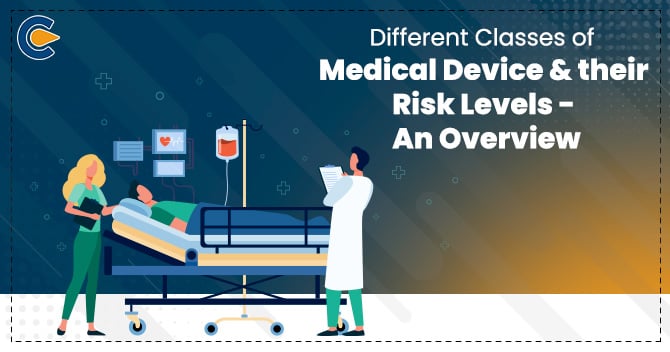The Central Drugs Standard Control Organization (CDSCO) is India’s national body for regulating medical devices and drugs. It performs duties comparable to those of the European Medicines Agency, Food and Drug Administration of the U. S., and the treatments and health services products Regulatory Agency of the United Kingdom. According to the Indian regulatory body, it is medical to have a CDSCO licence in order to sell different classes of medical devices. Each country has its own dedicated overseeing body under the ministry of health to make sure that all pharmaceuticals and medical devices are safe and effective. The CDSCO is in charge of regulating the registration and sale of medical devices that have been approved for use in India.
Under the DCGI, the regulatory approval and registration of medical devices by the CDSCO are governed by the different classes of medical devices set out by the CDSCO. The Drugs and Cosmetics Act of India needs to be updated, so the Health Ministry of India sent out new guidelines for medical devices and IVDs. Also, the CDSCO and state regulators are both in charge of giving licences for certain classes of basic medications, such as blood and blood products, I.V. liquids, vaccines, and sera.
Different Classes of Medical Device & their Risk-based Classifications by CDSCO
Indian regulators of the medical devices market have sent out another draught list of the Different Classes of Medical Devices. This list shows how the Medical Devices Rules of 2017 classify these devices. India is thought to be one of the best places to sell medical devices because it imports a lot of them. Classifications of Different Classes of Medical Device by CDSCO, led by the Drug Controller General of India (DCGI)[1], is in charge of regulating Different Classes of Medical Devices in the country. The law divides different classes of medical devices into four types: A, B, C, and D. Based on how dangerous they are, medical devices are put into one of four groups. To get a CDSCO manufacturing licence, companies that make medical devices need to register with CDSCO. The manufacturer needs help figuring out what paperwork they need to fill out for the CDSCO registration process.
|
Type of Device |
Risk |
Device Class |
QMS Audit |
Regulatory Pathway |
IAA |
Final Outcome |
|
Non-Notified Device |
NA |
NA |
NA |
Listing of devices in SUGAM portal |
Yes |
Listing in database |
|
Notified Device |
Low Risk |
A |
Schedule 5 of MDR 2017 or ISO 13485:2016 certification |
Device Registration |
Yes |
Test / Manufacturing /Loan/Import License |
|
Low – Moderate Risk |
B |
|||||
|
Moderate – High Risk |
C |
|||||
|
High Risk |
D |
Risk Based Factors
Most medical devices are classified by the risks they pose. How a medical device is actually classified by its risks depends on how and why it is used. CDSCO’s Different Classes of Medical Device classifies a larger group of devices, like cannulas and stents, into smaller groups with more specific names.
Indian Medical Devices Classification – Different Classes of Medical Device
In India, there are different classification systems for IVD and medical devices, and each of these systems has four classes based on how dangerous the devices are. In the table below, there are 4 different types of Indian medical devices:
| Device Class | Risk |
| A | Low Risk |
| B | Low Moderate Risk |
| C | Moderate-High Risk |
| D | High Risk |
Different Classes of Medical Devices have been divided into four different categories in accordance with the New Medical Rules of 2017. Class A, B, C and D. Any company that aims to manufacture such devices for distribution or sale must submit an application to CDSCO for a manufacturer’s licence.
Both class A and B medical devices are considered to be of low- and moderate-risk. The State Licensing Authority must receive the application for manufacturing these classes of medical devices (SLA). Class C and Class D devices are identified as High and Extremely High Risk devices, respectively. The application for their production must be submitted to the Central Licensing Authority (CLA).
IVD medical devices will be divided into four categories based on how they are used and how dangerous they are (New Medical Device Rules 2018).
The new devices establish a risk-based approach in which the level of regulation varies considerably based on the risks & technology associated with the meant use and characteristics of the device. Under the new system, four classes (Class A, B, C, and D) have been established, with Class A and B devices posing the lowest risk to patients and Class C and D devices posing the highest risk.
For example, a Class A device would be an elastic bandage or a mechanical barrier used to apply pressure or take in exudates from wounds that haven’t broken through the dermis and can heal on their own. Contact lens points are an example of a Class B medical device, whereas a blood bag that does not contain a drug would be considered a Class C device. Lastly, a transient-use, surgically invasive medical device that is anticipated to be used explicitly in direct contact with the central nervous system or for the diagnosis, monitoring, or correction of a heart problem or central circulatory framework condition via direct contact with body parts would be a Class D device.
These risk classifications will allow Indian medical device market registrants and their in-country members to better consider issues such as cost, clinical data requirements, and import authorization authority when marketing their products in India. The new regulation will harmonise the use of medical device devices with International Standards to facilitate the manufacturing and importation of medical devices.
Aim of CDSCO Registration
- Approval of new medications and clinical studies.
- Import permits.
- Licensing for making medical devices.
- Blood bank, vaccine, and medical device licencing
- Amendments to the Drugs & Cosmetics Act and its implementing regulations.
- Compliance with WHO GMP certification schemes.
- Grant to test licence, personal licence, NOCs for export.
- Central lab testing of drugs
Conclusion
In the medical field, there is always a balance between risks and benefits. In the medical device industry, the class of a medical device is used to classify how risky a device is and, consequently, what level of risk reduction is required. In terms of risk mitigation, a simple item like a bandage does not require much, whereas a complex medical device like a complex surgical laser would require significantly more.
Read our Article:A Step by Step guide for Registration Process for Medical Devices in India













